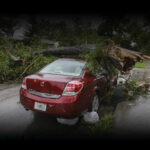The International Day for Disaster Reduction (I.D.D.R.), observed on October 13, is a global event that urges all citizens and governments to work together to develop more disaster-resilient communities and nations. As part of the declaration of the International Decade for Natural Disaster Reduction, the United Nations General Assembly established October 13 as the International Day for Natural Disaster Reduction. The day highlights how people and communities all around the globe are lowering their vulnerability to catastrophes and increasing awareness about the necessity of mitigating the risks they face. Typically, activities for the International Day for Natural Disaster Reduction include media announcements regarding the commencement of programs centered on the day’s topic.
History of International Day for Natural Disaster Reduction
Natural catastrophes such as earthquakes, droughts, tsunamis, extreme flooding, storms, and cyclones have claimed the lives of many people throughout the world, as well as their homes and access to necessary amenities such as hospitals. Some of these calamities have resulted in economic losses for some governments. The United Nations recognizes that education, training, and information exchange are important strategies to assist people to become better prepared to deal with natural catastrophes.
The International Day for Disaster Risk Reduction was founded in 1989 in response to the United Nations General Assembly’s proposal for a day to foster a global culture of risk awareness and disaster reduction. Every year on October 13, the day highlights how people and communities all around the globe are minimizing their vulnerability to catastrophes and increasing awareness about the necessity of mitigating the risks they face.
The decade and international day arose from a gradual realization that it was no longer sufficient to focus solely on emergency response to major disasters, such as the Chernobyl nuclear disaster, the famine that swept the Sahel in the 1980s, or earthquakes and extreme weather events, without considering how such events could be mitigated or prevented. The resolution reflected a growing recognition that incorporating a preventative strategy into national development plans to limit the effect of “natural disasters” “may also be highly beneficial in averting other types of catastrophes, such as those of an industrial or technical origin.”
The world was reminded in 2015 during the Third U.N. World Conference on Disaster Risk Reduction in Sendai, Japan, that catastrophes hit hardest at the local level, with the potential to cause loss of life and significant social and economic turmoil. Every year, millions of people are displaced as a result of sudden onset calamities. Disasters, many of which are worsened by climate change, have a detrimental influence on sustainable development investment and the anticipated outcomes.
International Day for Natural Disaster Reduction timeline
There is the emergence of a contemporary catastrophe management framework.
The International Day for Catastrophe Risk Reduction is founded in response to a proposal from the United Nations General Assembly for a day to promote a global culture of risk awareness and disaster reduction.
The United Nations Office for Disaster Risk Reduction (U.N.D.R.R.) is established to implement the International Strategy for Disaster Reduction.
The U.N. Secretary-General used the International Day for Natural Disaster Reduction to launch the "Sendai Seven Campaign," which refers to the seven goals of the Sendai Framework for Disaster Risk Reduction (2015 to 2030).
International Day for Natural Disaster Reduction FAQs
What are the primary goals of the International Decade for Disaster Reduction?
The decade’s aims (as stated by the United Nations General Assembly in 1988) are to assist at-risk governments in developing a greater knowledge of the factors that contribute to natural disasters. Early warning systems for natural disasters, such as storms, floods, volcanic eruptions, and insect infestations are part of the strategy.
What are natural disasters?
Examples of natural disasters include floods, landslides, earthquakes, hurricanes, and so on. They are catastrophic events resulting from atmospheric, geological, and hydrological changes.
How can we prevent natural disasters?
Natural solutions, such as preserving forests, wetlands, and coral reefs, can assist communities in preparing for, coping with, and recovering from catastrophes, especially slow-onset crises like drought. They can also mitigate the consequences of non-climate calamities, such as landslides after an earthquake.
How to Observe International Day for Natural Disaster Reduction
Participate in an event
Governments and communities also participate in the International Day for Natural Disaster Reduction through various activities such as drawing, play, essay, and photography competitions that aim to raise public awareness of natural disaster reduction and increase readiness for such catastrophes. You can participate in a local event to support the cause.
Examine your home's relief management strategies
Begin with your own house. Check that emergency exits, fire extinguishers, smoke alarms, and other safety features are in place and operational. These kinds of inspections can be valuable when the necessity arises.
Find out more about the day
Learn more about natural disasters in your area to participate in International Day for Natural Disaster Reduction activities. Take the time to educate yourself about it and how to avoid a disaster.
5 Facts About Natural Disasters
Natural disasters can cause financial problems
Natural disasters caused $1.7 trillion in damage and impacted 2.9 billion people between 2000 and 2012.
The most prevalent natural calamity is flooding
Aside from wildfires, floods are the most common natural calamity.
The elderly are the most severely impacted
Over 65-year-olds made up more than half of the victims of both Hurricane Katrina and Hurricane Sandy.
Natural disasters occurred throughout the world
In 2012, 905 natural disasters occurred throughout the world, including severe storms, droughts, tornadoes, earthquakes, floods, hail storms, typhoons, wildfires, and hurricanes.
Many fatalities are caused by natural disasters
In 2012, hydrological phenomena such as flooding or mass movements were responsible for over half of all fatalities caused by natural disasters.
Why International Day for Natural Disaster Reduction is Important
It raises awareness
The majority of local municipalities have a strategy in place — find out how your town intends to deal with calamities. If we want to leave a secure world for future generations, it is time for governments and people to take responsibility.
It benefits future generations
Future generations benefit from a well-functioning natural catastrophe mitigation plan. It guarantees that fewer lives are lost and that economic damages are kept to a minimum.
It saves lives
International Day for Natural Disaster Reduction was established to save as many lives as possible. It's a wonderful observation aimed at making everyone's life simpler.
International Day for Natural Disaster Reduction dates
| Year | Date | Day |
|---|---|---|
| 2025 | October 13 | Monday |
| 2026 | October 13 | Tuesday |
| 2027 | October 13 | Wednesday |
| 2028 | October 13 | Friday |
| 2029 | October 13 | Saturday |





























